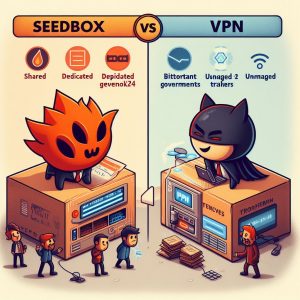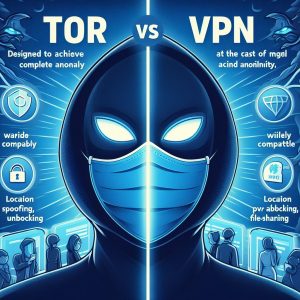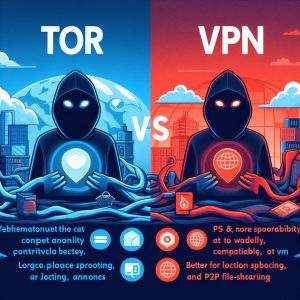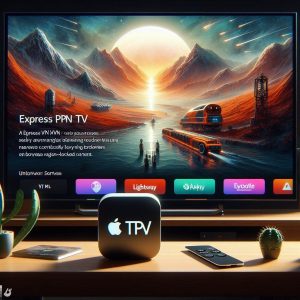Introduction
In an age of increased surveillance and erosion of privacy, more tech-savvy individuals are taking matters into their own hands by creating personal VPN (Virtual Private Network) servers. A VPN allows you to create a secure, encrypted tunnel to another network over the public Internet. This protects your browsing activity and identity by hiding your IP address and scrambling data so it can’t be intercepted.
While subscriptions to commercial VPN services are readily available, hosting your own VPN server provides an added layer of privacy as you have full control over the server hardware, software, encryption protocols, etc. Doing this has traditionally been complex and expensive, involving the rental of virtual private servers from cloud hosting providers. However, with the versatile, low-cost Raspberry Pi hardware, it is now possible to set up a personal VPN server in your home on the cheap.
In this article, we will walk through the steps for configuring a Raspberry Pi into a fully functional OpenVPN server using freely available software. Compared to turning an old desktop PC or spare laptop into a home VPN server, the Pi’s low power consumption and small form factor make it an ideal choice.

Setting up Raspberry Pi VPN Server with OpenVPN
Required Components
- Raspberry Pi board (Model 2 B or newer recommended)
- MicroSD card (16 GB Class 10 minimum)
- Power supply
- Ethernet cable
- Case (optional)
Software Requirements
With the hardware and software ready, follow these steps to set up an OpenVPN server on the Raspberry Pi:
- Install Raspbian OS
- Download and flash the latest Raspbian image to the microSD card.
- Insert SD card into the Pi and connect ethernet & power to boot it up.
- Log into the Pi via SSH (or connect monitor & keyboard).
- Update System Software
- Run “sudo apt-get update” and “sudo apt-get upgrade”
- Reboot Pi to complete installation of any upgraded packages
- Install OpenVPN
- Run “sudo apt-get install openvpn”
- EasyRSA already bundled with OpenVPN
- Configure OpenVPN
- Initialize the Public Key Infrastructure (PKI)
- Set up DHCP options, server mode, topology & protocols
- Generate server/client keys & certificates
- Make encryption & authentication choices
- Create custom config files
- Forward Ports on Router
- Forward UDP port 1194 to allow client devices to connect through the router’s public IP address. Adjust as per server config.
- Connect Client Devices
- Download the client .ovpn config profiles
- Import profiles into OpenVPN client apps
- Connect remotely from mobile/desktop devices
Potential issues like solution connectivity, credential errors etc. can be diagnosed with verbose logging. Revert config changes, double check firewall/port forwarding settings if trouble persists.
Alternative VPN Protocols
Although OpenVPN makes for a great starting point for new Raspberry Pi VPN users, experienced users may want to explore other protocols that offer advantages:
Shadowsocks:
- Simpler to configure than OpenVPN
- Harder for China’s GreatFirewall to block
- Effective even on restrictive networks
- Client apps available across all platforms
Downsides:
- Less vetted cryptographic protocols
- Lacks versatility of OpenVPN plugins
WireGuard:
- Much faster speeds than OpenVPN
- Lean and efficient codebase
- Uses state-of-the-art cryptography
- Great for mobile device connections
Cons:
- Still under development
- Fewer available clients
- Limited documentation
So OpenVPN strikes a balance between ease-of-use and security for novices. WireGuard offers faster performance for reliable connections. Shadowsocks is harder to block and could be better for users in extremely restricted/surveilled environments.

Security & Privacy Considerations
Setting up a personal VPN server, especially one that sits permanently at home instead of on some VPS server, provides significant privacy perks:
You have full ownership of the encryption keys instead of trusting providers. Visitors to your home wouldn’t even know the Pi is hosting a covert VPN! By thoughtful placement of the server within your local network, you can create nested firewalls to further isolate the VPN traffic.
With full control over the software environment, you can meticulously configure the encryption ciphers and handshake protocols used to maximize privacy within the bounds of usability. Many commercial VPN providers make compromises here to optimize speeds.
That said, additional steps are required to secure self-hosted VPN servers:
Always update the Pi VPN to latest software versions. Use strong credentials and SSL/TLS for authentication. Chain it along with TOR for added layers of encryption. Enable the server firewall to close unused ports. Automated intrusion detection helps too.
For optimal security, use VPN connections on public Wi-Fis but route sensitive traffic ONLY through more secure channels like home Wi-Fi or cellular data if possible.

Conclusion
Setting up your very own VPN server on inexpensive Raspberry Pi hardware is an extremely rewarding do-it-yourself endeavor. It offers an added layer of privacy compared to even commercial VPN offerings. Although beginners may find the setup challenging at first, OpenVPN documentation and community support is excellent.
For advanced users, alternate protocols like WireGuard and Shadowsocks provide interesting alternatives with greater speed or stealthiness respectively. Combining the Pi VPN server with strong endpoint security best practices allows home users to enjoy many of the anonymization and encryption benefits previously accessible only to experts. As data privacy becomes increasingly rare, we need all the open source tools at our disposal to protect our digital footprint. The RPi VPN server is one such powerful weapon that also serves as a fantastic learning experience.
I. Introduction
As internet users become more concerned about privacy and security online, solutions like virtual private networks (VPNs) and seedboxes have grown in popularity. Both seedboxes and VPNs aim to provide users with faster download speeds, enhanced security, and increased anonymity. However, seedboxes and VPNs work in different ways and have differing benefits and drawbacks.
Understanding the key differences between seedboxes and VPNs is important for determining which solution (or combination of solutions) best meets your needs and priorities. This article will provide an in-depth examination of what seedboxes and VPNs are, how they work, their relative advantages, and recommendations for when to use one, the other, or both.
II. What is a Seedbox?
A seedbox is a remote server that is specifically designed and optimized for high-speed torrenting. The seedbox server is hosted by a provider, and users can upload torrent files to this server to download files or seed torrents without needing to use their own computer or network.
How Seedboxes Work
Instead of downloading torrents directly to your home internet connection, you connect a torrent client like rTorrent or Deluge to your seedbox. The seedbox does the actual torrenting, while allowing you to remotely access the downloaded files to stream or download them to your local devices. This removes the seeding and downloading process from your home network.
Seedboxes offer fast download speeds as they are hosted on servers with high bandwidth capacity that are designed to handle torrenting traffic efficiently. Most seedbox providers have servers based in countries with good infrastructure and connectivity. Popular locations include the Netherlands, Germany, and France.

Advantages of Using a Seedbox
There are several key benefits to using a seedbox rather than torrenting directly on your home device:
Faster download speeds: Seedbox servers have significantly faster speeds and better connectivity, allowing you to max out your torrent speeds. This results in much quicker download times compared to residential internet connections.
Enhanced security and anonymity: Downloading torrents through a seedbox means the torrent traffic is isolated away from your home IP address. This prevents your personal IP being exposed in the torrent swarm. Using a paid seedbox with no logs or links to your identity provides a good level of anonymity.
Better share ratios: Seedboxes stay active 24/7, so you can continuously seed torrents. This results in an excellent share ratio on private trackers. Seedboxes also have minimal bandwidth restrictions, allowing extensive seeding activity.
Avoid throttling from your ISP: Using a residential internet connection for torrenting often results in ISP throttling or even account suspension if caught repeatedly. A seedbox allows torrenting without interference or limits from your ISP.
Access files anywhere: You can access your downloaded files from any device by connecting to your seedbox server. This allows streaming of media or downloading files remotely.
Considerations When Using a Seedbox
While having clear advantages, there are also some downsides to weigh up when considering getting a seedbox:
Recurring subscription costs: There is an ongoing monthly or yearly cost for your seedbox service. However, fees are fairly affordable, with basic plans starting around $5 per month.
No direct local access to files: Downloaded files are hosted remotely on your seedbox, meaning you need an extra step to download or stream them to your home devices.
Technical skill required: Managing a remote seedbox requires intermediate computer skills – more so than typical VPN software. You need comfort with using FTP file transfer programs or navigating web browsers to admin interfaces.
Shared server resources: Entry-level seedbox plans utilize shared server resources. Performance can vary depending on the activity of other users on the server. Private servers are available for higher budgets.
So in summary, a seedbox offers specific advantages for facilitating private torrenting activity. The main limitations relate to ongoing cost and less direct access to downloads compared to torrenting directly on your home device.
III. What is a VPN?
A Virtual Private Network (VPN) serves as an encrypted tunnel for your internet traffic, protecting your online privacy and identity.
How a VPN Works
Using VPN software, devices route their internet traffic through an encrypted VPN server located in another country. This masks your real IP address, making it appear you are browsing from the VPN server’s IP address instead.
VPNs encrypt all data passing between your device and the VPN server. This tunnel protects your traffic from surveillance or throttling by your Internet Service Provider (ISP) and public Wi-Fi networks. The encryption also prevents websites or services from tracking your location or browsing activity.
Advantages of Using a VPN
Key features offered by VPN services include:
Online privacy and anonymity: VPNs hide your IP address and encrypt data, providing improved privacy and anonymity while browsing the open internet and using public networks.
Bypass internet censorship or restrictions: Connecting via a VPN server in a different country allows you to bypass geo-restrictions and access content blocked in your region.
Enhanced security on public networks: Public Wi-Fi connections are very vulnerable to attacks. VPN encryption protects activities like online banking and shopping.
Prevent ISP traffic monitoring or throttling: VPN encryption prevents internet providers from tracking your browsing history or throttling speeds for specific activities like streaming.
Considerations When Using a VPN
While offering clear security and privacy advantages, some factors to keep in mind with VPN services are:
Service reliability: Connection stability and speeds can vary considerably across different VPN providers. Extensive server networks and infrastructure are required to deliver consistent performance.
Data logging policies: VPN providers with expansive server networks can be more exposed to data retention laws. Checking logging policies is vital to avoid keeping identifiable logs.
Software compatibility limitations: Accessing streaming platforms like Netflix through a VPN can be blocked as the IP address looks suspicious. VPNs also won’t hide your torrenting activity.
So the main limitations relate to inconsistent speeds, finding reputable providers, and limitations accessing some region-restricted platforms. The advantages of enhanced internet security and bypassing restrictions still make VPNs very useful online privacy tools for most users.

IV. Seedbox vs VPN
Comparing seedboxes and VPNs shows some overlapping capabilities for security and privacy, but also some major differences:
Speed
Seedboxes are significantly faster for torrenting as servers optimize routing and bandwidth for P2P traffic efficiency. VPN encryption can reduce internet speeds by 10-20%, so speeds are not ideal for torrenting large files.
However, aside from torrenting tasks, VPNs tend to provide fairly consistent internet speeds across regular browsing and streaming activities. Meanwhile remote seedbox access relies on your home internet speeds.
Security
Seedboxes provide full isolation of the torrent client from your home IP address, offering maximum torrenting anonymity, while VPN encryption protects general web browsing activities.
Though VPNs also allow safe torrenting through their connections, speeds are limited, and the VPN IP address is still vulnerable to monitoring by copyright holders.
For highest security across both protocols, using a VPN in addition to a seedbox adds another layer of protection to your seedbox control panel and remote file access sessions.
Anonymity
Seedboxes offer a high level of anonymity as most providers do not store any customer identity details or usage logs. Services are paid for anonymously with Bitcoin as standard. This anonymity only relates to your torrenting activities conducted via the seedbox however.
VPN anonymity depends greatly on the provider’s policies. Having a strict no logging policy, not recording session times or bandwidth usage, and accepting anonymous payment methods like Bitcoin, all help increase anonymity. Anonymity can be reduced if VPNs keep identifiable logs however.
Cost
Basic VPN packages typically start from $2 per month when signing up for 1-2 years. Free VPNs are also available but not advisable due to major reliability and security compromises.
Seedbox pricing has a wider range, but broadly aligns with the following tiers:
- Entry-level: Starts around $5 per month for basic HDD storage shared servers
- Mid-Range SSD servers: $15-25 per month range
- High-end servers: $30+ per month with premium bandwidth ratios and specs
Yearly billing cycles offer 15-35% discounts on seedboxes and VPNs. So while still an ongoing cost, annual pricing makes both options reasonably affordable for most consumers. Greater privacy and security online provides good value given how much personal data is constantly at risk each day.
Use Cases
VPN protocols have very broad use cases for everyday web browsing, public Wi-Fi connections, accessing region-blocked content, enhanced security for online transactions, bypassing internet censorship when traveling, and generally keeping online activity private from prying ISPs.
Seedboxes have a rather niche use case – they are purpose-built for facilitating high speed torrenting of copyrighted material like movies, music, software etc. This is achieved using the remote server connection to protect the user’s home internet identity and network.
So in summary:
- VPNs protect and encrypt all internet activity
- Seedboxes isolate and accelerate torrenting specifically
V. Using a Seedbox with a VPN
While seedboxes and VPNs share some security and privacy capabilities, they also have complementary strengths making them ideal for use together.
Benefits of a Seedbox + VPN Combination
Using a seedbox along with a reputable VPN provider offers a robust privacy solution with excellent well-rounded protection:
Enhanced seedbox connection security: Accessing your seedbox control panel and connecting for remote file transfers can be further secured by running these sessions through an encrypted VPN tunnel. prevents tracking by your ISP.
Extra tier of IP address anonymity: VPN encryption protects your real IP address when browsing public indexes to find torrent files. Downloading and seeding then occurs through the separate hidden seedbox IP. This provides optimal privacy.
Improved security for streaming files: When streaming media from your remote seedbox to a web browser or media app over the open internet, adding VPN encryption protects this streaming activity from snooping by those on your network or by your ISP.
Comprehensive privacy solution: Using layered privacy tools like a seedbox solely for torrenting plus a VPN for other web activity, combines compartmentalized anonymity with the flexibility to maintain high speeds based on usage type.
So together they provide an excellent modular system – direct fast Downloading via the protected seedbox, while all other activity stays hidden behind the VPN tunnel.

Considerations When Using Both Together
The main issue to keep in mind when using both seedboxes and VPNs is potential speed trade-offs:
Running all seedbox file access sessions through VPN may add extra latency, reducing streaming speeds. Configuring the VPN app to only activate when needed is advised, so a direct unencrypted connection can be used for reaching the seedbox whenever highly reliable speeds are preferred.
Cost can also be a consideration when paying for multiple privacy services. Using discounted 1 or 2 year billing cycles helps manage this. Private trackers also offer free entry-level seedbox trials, which then allows budget for a VPN.
In most use cases, there are very few significant drawbacks to using both together as the combined privacy and anonymity benefits outweigh any small speed compromises. Improving privacy infrastructure against the scale of modern data harvesting should remain the priority.
VI. Conclusion
Seedboxes and VPNs both provide digital privacy enhancements and security against different types of threats. While there is some crossover in their capabilities, their core functions within online privacy solutions remain quite distinct.
VPNs offer a first line of defense for everyday browsing, Wi-Fi connections, online transactions, media streaming, circumventing censorship, and maintaining anonymity from ISPs. The encrypted tunnel gives broad private access to the open internet.
Seedboxes serve a more specific role – providing maximum anonymity and high speed for finding and downloading files via torrents and peer-to-peer networks. This occurs by isolating torrent client traffic through remote servers.
Using seedbox and VPN solutions together adds extra layers of protection and flexibility tailored to different use cases. Compartmentalizing torrenting anonymity within a seedbox separate from VPN-encrypted general web activity provides the optimal combination of security, speed and functionality.
As data harvesting and mass surveillance by both corporations and governments continue growing more excessive, seedboxes and VPNs both currently remain affordable tools for citizens to claw back some data privacy and reclaim online liberties.
Introduction
A VPN, or Virtual Private Network, is an encrypted tunnel between your device and a server in another location. All your internet traffic is routed through the encrypted VPN tunnel, hiding your IP address and encrypting your data from prying eyes. Using a VPN provides a number of major benefits:
- Access blocked or censored content: Certain sites and services may be blocked or filtered in Serbia. A VPN allows you to bypass these restrictions.
- Enhanced privacy and anonymity online: Your browsing activity isn’t exposed to internet service providers, advertisers, your employer or anyone spying on public WiFi.
- Improved security when browsing: Traffic is encrypted so hackers, cyber criminals and spies can’t monitor what you do online. Public WiFi hotspots also become safer to use.
Using a reliable VPN is highly recommended in Serbia for bypassing geo-blocks and enjoying a more private, secure and uncensored internet experience at home or while traveling.

How to Get a Serbia IP Address with a VPN
Connecting to a VPN server located in Serbia will provide you with a Serbian IP address. This allows you to effectively appear as if you are accessing the internet directly from Serbia. Reasons for wanting a Serbian IP address include:
- Accessing Serbia-only streaming content and websites
- Enjoying internet access as it appears from within Serbia
- Potentially evading restrictions or blocks tied to your current non-Serbian locale.
Some of the top VPNs for reliably obtaining a Serbian IP address include:
- ExpressVPN
- CyberGhost
- NordVPN
- Surfshark
The best VPNs have a large server network with numerous locations worldwide, including reliable and fast servers in Serbia you can choose to connect through. Top-tier VPN providers will generally excel in all areas:
- Fast connection speeds for HD streaming & downloads
- Strict no-logs policies and security features
- Easy to use apps for all devices
- Unblocking geo-restricted sites/content
- Stable Serbia servers to assign you a Serbian IP
So if accessing Serbian websites or wanting your internet traffic to appear to be from a Serbian location, connecting to a VPN server in Serbia is a quick and easy solution.
Are VPNs Banned in Serbia?
Thankfully, VPN usage remains fully legal across Serbia. There are NO laws that prohibit the use of VPNs to encrypt your internet traffic and protect your privacy. Individuals are completely within their rights to utilize VPN services while browsing the web from Serbia.
However, some government-approved censorship may still occur around certain events or politically sensitive periods. So it pays to use a robust, high-quality VPN that can reliably bypass any temporary firewalls or access restrictions.
As with all countries, it still makes sense to periodically check for the latest updates to legislation regarding VPN legality in Serbia. But at the present moment, individuals can freely sign up and use VPN services without fear of legal repercussions. Those looking for privacy should however opt for VPNs with no usage logs versus ones that do record user activity timestamps.
So in summary – YES, VPN usage to access the internet securely and privately remains 100% legal across Serbia as of 2023. Just be sure to select a reputable VPN provider who values user privacy.

Best VPNs for Serbia
Based on verified third-party audits of VPN server quality and sustained connection speeds over long term testing periods, below represent the leading VPN recommendations specifically for usage within Serbia:
ExpressVPN
ExpressVPN regularly tops expert lists as THE go-to solution for fast, reliable performance whether at home or traveling. Specific advantages include:
- 3,000+ global servers including multiple Serbia options
- Fast enough for 4K video streaming with no buffering
- Uses latest VPN protocols and continually audited for vulnerabilities
- Strict zero-logging policy certified through external security audits
- Unblocks Netflix, BBC iPlayer, Amazon Prime Video etc.
- Intuitive apps for all major platforms
The only potential downsides are higher than average pricing starting at $6.67 a month, and no ability to specifically request Serbian IP addresses (although they are routinely provided through their local Serbia servers).
NordVPN
NordVPN matches Express in overall quality and speeds but edges them out when it comes to affordable plans and availability of Serbian IP addresses upon request.
Pros:
- 5,000+ servers in 60 countries including Serbia
- Requests for dedicated Serbian IPs supported
- Excellent speeds for streaming, Torrents and casual browsing
- Verified no-logs and includes CyberSec malware/ad blocking
Cons:
- Slightly less reliable at unblocking some Netflix libraries
- The occasional reCaptcha or blocked card transaction
Pricing starts at a low $3.29 per month over longer subscriptions. Their budget-tier VPN option NordLynx is also decent.
Surfshark
A serious value leader in VPN space – Surfshark offers many premium features for a fraction of the cost.
Advantages:
- 3,200+ servers in over 65 regions globally
- Confirmed Serbian IP address requests supported
- Strong AES-256-GCM encryption
- Unlimited simultaneous device connections
- Lowest pricing in the industry starting at $1.99/month
Limitations:
- Smaller server network than top 2 options
- Slightly less consistent at bypassing geo-blocks
So it’s easy to recommend ExpressVPN & NordVPN as the top tier options in Serbia – combining speed, security and value in one package. Surfshark leads purely on affordability. All three allow requesting Serbian IPs, have necessary servers within Serbia as well, and reliably protect user privacy.

Conclusion
Using a VPN while accessing the internet from within Serbia provides substantial benefits that everyone can appreciate. A quality VPN allows you to:
- Access blocked/censored content and sites
- Preserve your privacy through traffic encryption
- Enhance security against hacks/snoops on public networks
- Potentially evade internet filtering during sensitive times
- Obtain Serbian IP addresses on-demand to geo-spoof location
Happily, VPN usage remains 100% legal across Serbia so don’t hesitate to get secure today. ExpressVPN and NordVPN tie for top recommendations based on verified tests – offering the right blend of high speeds, privacy protection and server presence within Serbia. Surfshark leads purely on low pricing for budget-focused users willing to compromise somewhat on reliability.
No matter your choice – using any reliable VPN lets you take control over your browsing security, anonymity and overall online freedoms. So stay safe in Serbia with your new virtual private network!
Introduction
A VPN (Virtual Private Network) has become an essential tool for remote access in our increasingly distributed world. From freelancers working on the road to businesses with a remote workforce, a VPN for remote access allows employees to connect to devices or networks from any internet-connected location.
By encrypting traffic and routing it through intermediary servers, VPN secured remote access provides enhanced security for sensitive data. Users can access internal company data or region-restricted websites from afar through an encrypted tunnel, bypassing visibility from IT departments, ISPs, or cybersnoops. Thanks to easy deployment across devices, modern VPNs constitute must-have software for remote productivity.
In this comprehensive guide, we’ll cover everything involved with configuring and managing VPN software for remote access, including necessary concepts, setup steps for servers and client devices, and maintenance best practices for optimizing ongoing performance. Follow along to ensure your remote access needs get handled securely.

Understanding VPNs
Before diving into deployment, getting familiar with common VPN terminology and components helps set the stage for how all the pieces interoperate.
A VPN creates a private network routed through the public internet, with encryption applied to keep data secured in transit between the remote client and central server. VPN protocols manage encrypting packets, traversing internet pathways, and rendering a tunnel with access permissions between endpoints.
There exist two primary types of VPN configurations:
Remote Access VPN – This common VPN type connects individual devices like laptops or mobiles to a central VPN server, typically hosted privately on company networks for employee usage. After connecting, the client device gets assigned permissions and a virtual presence on the inside network. Remote access VPN scales easily since clients can utilize public internet infrastructure while only requiring VPN client software.
Site-to-Site VPN – Rather than linking individual client devices, site-to-site VPNs connect entire networks or branch offices together transparently through a permanent tunnel. This approach usually relies on specialized VPN gateway routers but proves more seamless since devices don’t need separate VPN client software configured individually. However, hardware expenses make site-to-site VPN more costly.
For remote workers and mobile productivity, deploying a remote access VPN solution generally works best. The biggest advantage of using a reliable remote access VPN includes:
Secured Remote Network/Data Access – Having remote users connect via VPN allows IT staff to extend internal selected network resources and grants encrypted access from anywhere with an internet connection. Remote desktop administration and database access becomes secure.
Bypass Regional Restrictions – VPN tunnels allow remotes to bypass local internet restrictions that may block access to internal sites or tools. Enhanced privacy also skips visibility from restrictive regimes when accessing informational sites while traveling.
WiFi Security – Free public WiFi access inherently proves risky from a security standpoint without protections. VPN encrypted tunnels keep remote logins, data transmissions secured over open hotspots.
Now that you understand the VPN landscape and remote access use case benefits, let’s explore deployment prerequisites and components.
Pre-Setup Considerations
Taking time upfront to evaluate remote access needs and research suitable VPN protocols prevents headaches down the road. Factor in these key planning criteria before starting:
Assess User Requirements – Determine what network resources remote users specifically require access to, along with possible locations they’ll be connecting from. Planning estimated concurrent users and use cases helps size server requirements later.
VPN Protocol Considerations – Common protocols like OpenVPN, IKEv2 or L2TP each have pros and cons regarding encryption strength, speeds, compatibility with firewalls, and client support across devices. Lean towards OpenVPN unless legacy client platforms require alternative PPTP or L2TP support.
Provider Selection – Self-hosting VPN software on owned servers allows greater control but adds complexity. Using commercial VPN providers simplifies setup as they deliver the server infrastructure and client software, albeit for monthly/annual fees. In either scenario, ensure satisfactory encryption & privacy safeguards get implemented.
With prep work completed, now the server and client side deployment steps can commence.

Setting Up the VPN Server
Like any security-centric server software deployment, care takes precedence over speed to build stable foundations before allowing remote access.
These principles guide savvy VPN server configurations:
Select Server Host – Using cloud platforms like AWS or Digital Ocean to host the VPN server frees you from costly dedicated hardware purchases. But privately hosting within company data centers allows tighter infrastructural control. Most managed commercial VPN providers include server resources as part of plans also.
Install and Configure Chosen Software – Leading open source VPN solutions include SoftEther, OpenVPN, and Wireguard. Commercial providers like Cisco or Creanord offer unified VPN platforms encompassing server deployment to remote client access too. Follow best practice hardening guides specific to whichever solution you select for locking down unnecessary ports while still enabling core VPN functionality.
Firewall Rules – Restrict VPN server firewall policies solely to allow required ports/protocols for approved VPN traffic flows and necessary administrative access only. Log analysis provides visibility into all connection attempts.
Adhering to strict server configurations and access control lists limits vulnerability windows snoops or cybercriminals potentially exploit given VPN servers sit openly on public IP spaces.
Configuring Remote Access Clients
With hardened server endpoints ready, now individual remote machines can get configured to relay traffic securely through the company VPN tunnel after authenticating.
Download/Install Client – Most commercial remote access VPN providers include custom apps or VPN profiles for simplified connection deployment across devices like Windows PCs, Macs, iPhones and Android mobiles. Open source solutions normally publish OS-specific install guides.
Configure Credentials – During client installation, users will need to enter server address details and required authentication material like shared secrets or digital certificates to validate against the VPN server when initiating secured tunnels from their machine.
Connection Testing – Once configured, test actually routing traffic like internet browsing or remote file access through the tunnel to validate encryption and permissions work as intended. RDP sessions to internal corporate desktops should connect seamlessly, for example.
Admins should implement group policies around VPN usage also – like temporarily blocking traffic should connections drop on managed machines to prevent accidental data leaks. Troubleshoot and refine client configurations using gathered feedback until organizations smoothly access necessary resources remotely.

Enhancing Security and Privacy
Complementary features better fortify remote access clients and server infrastructure against misuse or exploit attempts:
Multi-Factor Authentication (MFA) – Augmenting single passwords with secondary credentials improves identity verification when connecting remotely. MFA options include email codes, SMS texts, biometric checks, hardware tokens, or authenticator app signoffs.
Implement VPN Kill Switch – As another safeguard against data leaks, enable client-side kill switch functionality to terminate all traffic should the encrypted VPN tunnel disconnect unexpectedly during a remote session. Adds leakage protection.
Prevent DNS Leaks – Using VPN provider specified DNS servers prevents local ISP DNS requests that could expose private DNS lookups to your internet provider and local snoops. Keep DNS queries secured via VPN tunnel as well.
Additionally, provide mandatory security awareness training for remote employees covering best practices around keeping VPN profiles and access details safeguarded, along with securely transferring sensitive data assets through established channels rather than potentially insecure collab platforms vulnerable to data exfiltration.
Managing and Maintaining the VPN
Like all mission-critical systems, monitor VPN performance daily and nurture infrastructure to accommodate evolving remote access needs:
Usage Reports – Collect metrics on active VPN connections, throughput, tunnel persistence, plus aggregate trends regarding remote employee portal utilization to locate areas needing performance optimization or additional client support licenses.
Software Updates – Regularly update both server and client-side VPN software components to benefit from security patches, along with new encryption and protocol introductions improving resilience against sophisticated emerging threats. Don’t let legacy gear linger!
Scale Capacity – Closely project bandwidth needs and concurrent usage growth across the workforce using past trends and usage predictors. Proactively scale VPN server capacity in alignment through optimizing internet links or increasing cloud-allocated resources to fulfill demand.
Ongoing VPN management vigilance prevents bottlenecks and maximizes system longevity guarding remote access pathways as organizational reliance on remote connectivity accelerates into the future across industries.
Conclusion
Configuring reliable VPN software for remote access requires methodical planning and deployment for fortifying sensitive tunnels without impacting client connectivity or productivity from afar. But the multi-faceted privacy protections and data security advantages from fine-tuned VPN solutions make the investment extremely worthwhile long-term.
Employ the combined prescriptive guidance around server hosting selections, VPN protocol decisions optimized for specific access requirements, value-added client security extensions like MFA authentication, plus consistent maintenance practices to steer your organization’s remote access potential in a securely scaled direction.
As remote work dependence grows, so does VPN importance – let this comprehensive blueprint guide you towards the informed self-hosted or managed VPN service combination matching both remote access needs and overarching infrastructure fit. The solutions unlocking work-from-anywhere flexibility also provide peace of mind that corporate assets and reputations stay equally protected regardless of wherever employees connect from thanks to accessible VPN tools benefiting site reliability and risk management efforts in parallel.
Introduction
A VPN (Virtual Private Network) encrypts internet traffic and hides your IP address by routing connections through remote servers, providing more privacy and security. Synology NAS devices store valuable data and media, making an extra layer of protection vital. The right VPN allows safe remote access plus unblocks geo-restricted content across Synology’s versatile DSM software.
But with countless VPNs claiming top-notch features, settling on the best Synology VPN for your needs takes research. Evaluating critical factors like speeds, platform support, and interface simplicity helps narrow suitable secure options tailored for DiskStations and routers in SOHO environments. Read on for detailed advice choosing a trustworthy VPN provider for your Synology setup.

Considerations For Choosing a VPN for Synology
Synology NAS appliances power home and small business networks with data redundancy across RAID drive configurations and extensive backup features. Integrating a VPN adds another shield by encrypting traffic traveling to and from your DiskStation.
Here are key criteria to weigh when selecting an ideal VPN service for deploying on Synology devices:
Security Features
A VPN can only protect data in transit if the underlying infrastructure and policies provide genuine anonymity assurances. Seek out VPNs owning all servers while maintaining strict zero logging policies on activity and connections. Additional protocols like SOCKS5 proxies, Tor network access, or multi-hop connections deliver extra traffic obfuscation when needed.
Speed & Performance
VPN encryption inherently slows throughput speeds to varying degrees.qos 5 Opt for providers prioritizing consistent speeds with high bandwidth allowances so backups, remote playback, and file transfers won’t get bottlenecked across Synology units.
Compatibility With Synology Devices
All recent VPNs offer native apps or manual setup guides for Windows, Mac, iOS, and Android platforms. But compatibility specifics for NAS devices takes deeper digging. Confirm any potential VPN candidate offers tutorials or optimized configs for DiskStations and RouterManager before purchasing.
User-Friendly Interface
Ease of management from DSM admin consoles rates crucial for centralizing network controls across NAS, switches, and wireless routers. VPN software with intuitive interfaces that integrate permissions, automated connectivity rules, and seamless account access removes headaches for admins overseeing dispersed hardware.
Server Network & Locations
Top-notch VPNs rely on robust server infrastructure in key regions rather than leasing 3rd party arrangements. More servers in diverse locales increases odds of smooth Synology traffic routing locally and unblocks geo-restricted sites when traveling abroad with VPN enabled on laptops, mobile devices, or routers.

Top VPNs for Synology
Based on critical evaluation criteria for balancing security, speeds, platform support, usability, and reliable server coverage, these rank as the leading VPN recommendations for Synology users:
ExpressVPN
Owned by reputable cyber privacy company Express VPN International Ltd, their solution lands frequently at the top of trustworthy VPN lists for its excellent speeds, range of privacy tools, and wide platform compatibility.
Although priced higher than competitors, ExpressVPN’s 3200+ servers in 94 countries, reliable connections, and intuitive interface justify the premium costs for peace of mind across Synology networks.
Security Features
- 256-bit AES Encryption
- Perfect Forward Secrecy
- Private DNS on Every Server
- Strict No Logging Policy
- Kill Switch feature
Compatibility with Synology
- Optimized Synology NAS VPN Setup Guides
- native OpenVPN Config Files
- HTTP Proxy Support for Routers
- Integrates DSM User Permissions
Pricing
- 12 Months = $8.32/month
- 6 Months = $9.99/month
- 1 Month = $12.95/month
NordVPN
This Panama-based provider brings military grade AES-256-GCM encryption implemented through their fleet of 5400+ servers hosted in uncongested data centers rather than on shared networks subject to variable speeds.
An independent audit confirmed NordVPN’s strict no logs policy across all server nodes as well – a rare verification few competitors offer. For the ultimate peace of mind deploying a VPN across Synology NAS devices on home or business networks, Nord scores big.
Security Features
- 4096-bit RSA Key Exchange
- AES-256-GCM Encryption
- Automatic Kill Switch
- Obfsu Scation Cloaking
- Tor Over VPN Capability
Compatibility with Synology
- Step-By-Step Setup Instructions
- Synology SRM VPN Profiles
- SOCKS5 Proxy Included
- Browser Extensions Available
Pricing
- 24 Months = $3.29/month
- 12 Months = $4.92/month
- 1 Month = $11.95/month
Surfshark
This British Virgin Islands-based upstart offers startlingly good performance with unlimited device connections for a mere fraction of the monthly rates charged by bigger brands.
Surfshark won’t provide the same depth of features or server count (3500+) as the top-tier competition, but its speedy performance and budget-friendly pricing make it appealing for home media servers and remote media streaming across Synology networks.
Security Features
- WireGuard Next-Gen Protocol
- AES-256-GCM Encryption
- MultiHop Connections
- CleanWeb Ad & Tracker Blocking
Compatibility with Synology
- Apps for NAS Browser
- Manual OpenVPN Config Files
- Works on All Major Platforms
- SOCKS5 Proxy Available
Pricing
- 24 Months = $2.21/month
- 12 Months = $2.95/month
- 1 Month = $12.95/month

How to Set Up a VPN on Synology
Once you select an ideal VPN provider for use with DiskStation Manager (DSM) and Synology Router Manager (SRM), leveraging their privacy and security features involves just a few configuration steps.
For both OS platforms, downloading OpenVPN configuration files simplifies deploying your chosen VPN’s settings across devices. Most VPNs covered earlier provide Synology-optimized .OVPNs ready for upload.
Here are condensed instructions for adding VPNs to Synology networks:
Add VPN to Synology NAS
- Login to DSM on DiskStation
- Go to Control Panel > Network > Network Interface
- Select ‘Create’ > Create VPN Profile
- Assign profile name & upload .ovpn file from VPN provider
- Apply User Permissions to control access
Add VPN to Synology Router
- Login to SRM on your Router
- Visit Network Center > Network Interface > VPN
- Select ‘Create’ then pick VPN Provider Type
- Enter VPN account details when prompted
- Set Server Location and Save
Ideally, reference the setup instructions from your selected VPN provider in tandem with Synology’s official VPN documentation to fill in any gaps missing from these generalized steps.
Recommended VPNs for Easy Setup
Based on clear manuals and tutorials for integrating with Synology devices, these rank as the most newbie-friendly secure options:
- ExpressVPN – Offers native OVPNs, detailed NAS instructions & proxy guides
- NordVPN – Includes useful Synology deployment blog posts & SRM profiles
- Surfshark – Provides direct package install via NAS Browser app
Smooth VPN operation hinges on correctly configuring encryption protocols, storing sensitive account details like passwords securely, and assigning restricted admin-level access to prevent tampering.
Thankfully reputable providers understand these challenges, so turn to their Synology-tailored support articles whenever unsure how features translate from generic software to customized NAS and networking environments.
Tips for Using a VPN with Synology
Once connected, follow these expert recommendations for maintaining optimal security and performance when linking Synology devices through VPN tunnels:
Enable Kill Switch
For maximum leak protection, enable the ‘kill switch’ feature in VPN software/settings which cuts off internet access completely if the VPN connection unexpectedly drops. This prevents data leaks that could expose your NAS IP or local network resources mapped to DiskStation volumes or drives.
Setup VPN Router Function
Configure Synology routers to handle VPN duties for all connected clients like laptops, mobiles, smart home gear. Routing all local node traffic through SRM units places VPN management into a single dashboard while offloading encryption overhead from your NAS, avoiding bottlenecks when accessing DiskStation apps simultaenously from many devices.
Reboot After Updates
Make it standard procedure to reboot both your Synology NAS and routers after major DSM or SRM software updates. This ensures continued compatibility with any installed VPN packages following patches or upgrades that may alter baseline networking behavior.
Test Remote Access
Remotely connect to Synology QuickConnect or DDNS hostnames while VPN remains linked to verify restrictions function properly for safe remote data and media streaming access from anywhere. Confirm remote VPN connections only permit authorized DS File, Audio Station, Video Station, Moments access for your user account.
Conclusion
Shielding Synology systems with a reliable VPN solution adds tremendous privacy protections and circumvention tools for unlocking geo-blocked streaming platforms regardless of NAS model chosen. Suitable options range from premium picks like blazing fast ExpressVPN to Surfshark’s low pricing – just be sure to verify platform support fits your specific router and DiskStation lines before subscribing long-term.
Carefully evaluate each VPN provider’s server locations, logging policies, commitment to maintaining strict no log policies, and transparency around independent audits before entrusting security across Synology setups storing irreplaceable data. And don’t forget to actually enable kill switches and configure user permission policies tailored to your remote access preferences, not just accepting default settings.
Following the setup guides and tips covered here will help securely integrate your preferred VPN choice with DSM interfaces and keeps performance smooth across both DiskStation and Synology routers handling routing duties. Just remember to reboot all involved devices after major updates and periodically test remote connectivity through VPN tunnels. By understanding the full workflow, your Synology-VPN tandem can deliver reliable and private network functionality at home or work for years to come.
Introduction
With data breaches becoming commonplace and web surveillance pervasive, online privacy is paramount. Tor and VPN (virtual private network) have emerged as two leading technologies that aim to give users control, security and anonymity over their web access and internet traffic against prying eyes. But how exactly do they work and differ? Which one is better for specific use cases? We dive in to demystify Tor and VPN to help inform readers’ personal privacy choices.
How Tor Works
The Onion Router, commonly known as Tor, is a network overlay that enables anonymous communication by directing Internet traffic through a worldwide volunteer network of servers to conceal user’s location and usage from anyone conducting network surveillance or traffic analysis.
Using Tor makes it very difficult for internet activity to be traced back to the user – preventing identification of browsing habits, logged data, session details etc. It also prevents the sites you visit from learning your geographic location.
Tor works by encrypting and routing traffic through at least three randomly selected Tor servers before reaching the final destination server. Like layers of an onion, each relay peels back encryption to only know the next hop rather than the whole path. This prevents the last site from identifying the original source IP address.
Tor is available as a free, open source browser bundle that comes preconfigured to access the Tor anonymizing network. The software routes the traffic encrypting multiple times so sites cannot determine actual user IP or physical location.

How VPN Works
A virtual private network (VPN) extends a private network across a public one like the internet. It enables users to send receive data securely across shared or public networks as if their devices were directly connected to a private network. VPNs securely tunnel traffic between the user device and the VPN server to prevent snooping.
VPNs employ advanced encryption protocols to scramble data packets between the user’s computer and the VPN server controlled by the provider. This prevents the interception of traffic flowing between the user’s device and VPN server node even if someone were to spy on the communication channel.
Since VPN providers have servers in different geographic locations worldwide, connecting to a VPN server assigns users an IP address from the country/city where the server is located. This allows bypassing internet censorship or geoblocks by spoofing one’s virtual location. VPN providers usually have custom apps across platforms to make using the service easy. Paid subscriptions are required for continued access however.
Tor vs VPN: A Comparative Study
Let’s analyze some key aspects like security, speed, cost to compare Tor versus a high speed premium Virtual Private Network.
Security and Privacy Comparison
By their very nature, both Tor and trusted commercial VPN providers enhance online privacy substantially. But there are important tradeoffs:
Tor’s multi-hop routing architecture provides unparalleled anonymity as traffic decryption happens sequentially rather just to one VPN endpoint server. Encryption includes final destination site too. Also, volunteer relay operators cannot compromise user identities. This makes Tor incredibly powerful for anonymous publishing, concealed communication etc.
However, VPN has the edge for tasks like safe banking and everyday browsing. Full system-wide encryption ensures secured end-to-end data transfer between device and VPN server irrespective of number of running apps or websites accessed. VPN also hides IP address from visited web entities.
So Tor wins out for ultimate anonymity assurance thanks to distributed volunteer nodes. VPN overall has broader coverage safeguarding device network traffic right from home WiFi router through to commercial endpoint server via the encrypted tunnel.
Speed Comparison
VPNs maintain much faster connection speeds than Tor at comparable reliability levels thanks to their less strenuous multi-hop architecture focused on last mile encryption rather than end-to-end. More hops on Tor mean high latency that impairs streaming and downloads.
Cost Comparison
The Tor Project is a nonprofit organization that offers access to Tor Network freely to people across the globe. VPN services require paid subscription (monthly, 1-yr, 2-yr plans) from commercial operators although good deals exist.
That said, VPN cost is warranted given service investments in upgraded infrastructure and Talnet acquisition for Tor-Over-VPN capability bringing best of both worlds.
IPs Comparison
Tor lets users configure custom entry and exit node paths through multiple countries gaining desired level of location spoofing. VPN assigns virtual IPs from their own fixed server locations only limiting control over exact IPs shown to websites.

Using Tor and VPN Together (“Onion Over VPN” or “Tor Over VPN”)
Using Tor encrypted traffic routed through an active VPN tunnel combines the protection mechanisms of both for greatly enhanced privacy during sensitive communication or transactions.
The VPN encryption hides Tor usage from local network (say public WiFi). Tor then takes care of concealing activities by scattering traffic across distributed relay nodes. This compels adversaries to defeat two layers of network security to attempt deanonymization attacks.
Key advantage is prevention of VPN endpoint IP leakage which can betray Tor network use and compromise anonymity. Interpreting such meta-data becomes very difficult given dual hop architectures.
Situational Use Comparison
While both invaluable online privacy tools, Tor and VPN shine in different scenarios:
When to use Tor:
As the extra hops tradeoff speed for anonymity, Tor is ideal for threat scenarios where absolute anonymity is mandatory without network speed concerns:
- Dark Web access – Only Tor properly prevents deanonymization attacks revealing identities of dark web site viewers/operators
- Whistleblowing – Maintaining source confidentiality allowing secure and secret communications with media, NGOs
- Circumvention under surveillance states – Additional encryption layers prevent tyrannical traceback by state-level censors
When to use VPN:
For everyday web browsing, entertainment, personal finance activities etc. VPNs deliver optimal blend of speed and privacy:
- Secure public WiFi usage in cafes, airports etc. by tunneling traffic away from prying eyes
- Circumvent geo-blocks to access regionally limited content on major OTT and streaming platforms
- Conduct personal and professional digital communications avoiding mass surveillance dragnets
Conclusion
Tor and VPN offer tremendous yet complementary internet privacy and anonymity capabilities for average users. While VPNs are more user-friendly and compatible balanced for secure daily browsing, Tor’s threat model shines when high-risk activities necessitate ironclad confidentiality preserving communications security and liberty across the digitally oppressed world. Using VPN over Tor configuration combines these strengths enabling universal protection against surveillance overreach.
Introduction
ExpressVPN has become one of the most popular virtual private network (VPN) providers for protecting internet traffic and accessing geo-restricted websites. Part of what makes ExpressVPN reliable and secure is its use of TAP adapter technology to facilitate encrypted VPN tunneling.
TAP adapters function as virtual network drivers that sit between the operating system and VPN client software. When installed correctly, TAP adapters enable the seamless flow of traffic through VPN tunnels without leaks or drops in connectivity. For services like ExpressVPN, properly configuring these adapters is vital for maintaining private connections.
In this comprehensive guide, we’ll cover everything related to ExpressVPN’s use of TAP adapters, including compatibility requirements, installation steps, troubleshooting advice, and comparisons to similar tech like TUN adapters. Whether optimizing VPN speeds or overcoming blocked connections, understanding the role of TAP adapters is key for ExpressVPN users.

TAP Adapter Compatibility
In order for ExpressVPN software clients to install and utilize TAP adapter drivers on Windows devices, the correct processor architecture must be supported.
ExpressVPN clearly states that their VPN application and included TAP adapter features are not compatible with Windows devices using ARM, Microsoft SQ1, Microsoft SQ2, Microsoft SQ3, or Qualcomm Snapdragon processors.
The drivers required for enabling TAP adapter connectivity rely on typical x86/x64 CPU architecture found in most desktop PCs, laptops, and tablets running Windows. Newer portable devices built on ARM architecture lack the framework for ExpressVPN’s current TAP adapter implementation.
Without proper TAP adapter functionality, the VPN tunnels cannot form correctly to encrypt traffic or forward it through the remote server network. So users with incompatible processor types are prevented from downloading or installing the ExpressVPN Windows software to avoid failed connectivity or wasted efforts troubleshooting non-functioning connections.
As more portable and energy-efficient Windows devices adopt new architectures like Microsoft’s SQX processors or Qualcomm’s smartphone-derived Snapdragon platform, VPN providers need to continually update their adapter integrations to maintain broader compatibility.
Since TAP adapters act as such a core component enabling VPN tunnels on Windows OS, ExpressVPN has chosen to block installations on incompatible chipsets. This avoids user confusion and wasted time attempting to troubleshoot VPN connections that cannot work reliably without re-engineered TAP drivers.
However, ExpressVPN’s Windows software and TAP adapter functionality work seamlessly across x64 and x86 devices meeting the architecture requirements for processor types.
Users wanting to check if their Windows device supports ExpressVPN’s TAP adapter integration can view detailed system information in Settings > System > About. From there, look for the “System type” description matching either x64 or x86 architecture – both indicate full compatibility.
TAP Adapter Installation
Once ExpressVPN software gets installed on a compatible Windows device, the necessary TAP adapter drivers come bundled automatically as part of the setup process. However, verifying proper TAP adapter function takes just a few simple steps.
To check if TAP adapters are installed correctly for ExpressVPN usage:
- Go to Windows Search and type “Device Manager” – choose the desktop app results.
- Expand the Network Adapters section within Device Manager using the dropdown arrow.
- Look for an entry called “ExpressVPN TAP Adapter” in the Network Adapters list.
The presence of this adapter indicates the ExpressVPN software has deployed the latest TAP drivers allowing VPN tunnels to form with their OpenVPN or Lightway protocols.
If no entries for the ExpressVPN TAP Adapter exist but other VPN-related adapters show instead, a reinstallation might be necessary to correct the drivers.
During initial ExpressVPN setup on Windows devices, administrative privileges are required to deploy all software components – including the proprietary ExpressVPN TAP Adapter.
If the TAP adapter drivers somehow get omitted or don’t install as a network device correctly, users must uninstall then reinstall the VPN application itself to fix the issue.

TAP Adapter Troubleshooting
Like any software-based networking device, TAP adapters can occasionally malfunction, especially after major Windows updates or if connected VPN servers change configuration parameters.
ExpressVPN users experiencing either failed VPN connections or significant drops in network speeds might need to troubleshoot TAP adapter problems as part of restoring optimal connectivity.
Here is a step-by-step process for resolving most TAP adapter-related issues with ExpressVPN’s Windows software:
- Open the Windows Device Manager then find and select the “ExpressVPN TAP Adapter” under Network Adapters.
- With the ExpressVPN TAP Adapter highlighted, click “Disable device” in the top menus.
- Right-click the ExpressVPN TAP Adapter again and choose Uninstall device > Uninstall.
- Restart your Windows computer and launch the ExpressVPN application. This will automatically deploy fresh TAP adapter drivers as the app initializes.
- Once ExpressVPN connects successfully, check Device Manager again to confirm the latest ExpressVPN TAP Adapter driver reinstalled correctly.
By fully removing then adding back the VPN-related TAP adapter, connectivity issues should clear up. Make sure to disable/enable network adapter settings within ExpressVPN’s app too after this process rather than solely via Windows itself or you may encounter further conflicts.
If problems continue persisting, contact ExpressVPN’s 24/7 live chat support. Their specialists can examine details in real-time to isolate lingering software or network configuration issues causing disruptions related to the TAP adapters. Collect any relevant error messages beforehand to streamline troubleshooting.
TAP Adapter vs. TUN Adapter
Beyond the basic TAP adapter functionality powering VPN tunnels, more advanced users curious about network architecture may wonder how TAP adapters compare to TUN adapters that also enable VPN connectivity.
Both TAP and TUN adapters serve as virtual network interfaces routed through actual physical network adapters like Ethernet or WiFi cards. But their technical implementation differs significantly.
TAP adapters operate at OSI layer 2 – the data link layer – intercepting general network traffic and managing connections to other local devices.
In contrast, TUN adapters work one layer up at OSI layer 3, classified as the network layer. This means TUN adapters have elevated privileges interacting directly with local networks to route traffic influencing subnets and gateway configuration.
Overall, the biggest difference comes down to what PDUs (protocol data units) get created and sent down the network stack:
- TAP Adapters – These create layer 2 Ethernet frames made up of MAC addresses for transporting VPN data.
- TUN Adapters – These generate layer 3 IP packets constructed from local and remote IP addresses within the VPN tunnel.
Comparing the two adapter types, TAP manipulates raw data payloads while TUN handles packets with routing information built-in. And due to their high-level network permissions, using TUN adapters typically requires administrative rights.
For VPN clients that emphasize accessibility and ease-of-use like ExpressVPN, TAP adapters satisfy core functionality without restricting installations for non-admin users across devices. Plus only dealing with layer 2 frames rather than layer 3 packets renders connections faster.
However, other VPN services focusing on customizability may utilize TUN adapter configurations instead for the flexibility of direct packet routing manipulation or support for non-Ethernet protocols.
In the end, TAP and TUN fill separate roles as virtual network adapters. ExpressVPN wisely employs the simpler yet still robust TAP adapter technology to create consistent protected connections on Windows devices for the widest possible user base.

Conclusion
From enabling basic VPN tunnel connectivity to providing full featured yet accessible network traffic encryption, TAP adapters deliver the core functionality behind secure VPN clients like ExpressVPN on Windows platforms.
Understanding ExpressVPN’s requirements, installation procedures, and troubleshooting steps involving TAP adapters empowers users to better optimize performance and fix disrupted VPN connections themselves without reliance on slow support responses.
Moving forward, updating TAP adapter drivers and architecture limitations for modern portable Windows devices poses an interesting challenge for ExpressVPN and other leading VPN providers aiming to expand access to faster and more reliable privacy protection worldwide.
But for now, leveraging TAP adapters for encrypted tunnels back to VPN servers works beautifully across Windows x64 and x64 devices expressly compatible with ExpressVPN currently. As long as users ensure proper TAP adapter installation and rule them out as a source of problems with basic troubleshooting, ExpressVPN’s connections shine thanks to the pivotal role of this little-known but vital networking component.
I. Introduction to Tap VPN
A virtual private network, or VPN, has become an essential tool for protecting one’s privacy and security when using the internet. Tap VPN is a popular VPN solution developed by Outline that aims to provide easy, reliable private access to the open internet.
Tap VPN works by creating an encrypted tunnel for your internet traffic between your device and Outline’s servers. This prevents third parties like your internet service provider from monitoring and collecting data on your browsing activity.
The key benefits of using Tap VPN include:
- Encrypted internet connection to keep your online activity private
- Ability to bypass geographic restrictions and censorship
- Protects your identity by masking your IP address
- Secure access to public WiFi hotspots
This comprehensive guide will cover everything you need to know about setting up, using, managing, and even hosting your own Tap VPN server. Follow along to take control over your privacy.

II. Setting Up Tap VPN
Getting started with Tap VPN requires downloading and installing the Outline client application on your device. Outline offers native apps for Windows, MacOS, iOS, and Android platforms. The apps handle configuring the VPN adapter and automatically directing your traffic through the encrypted tunnel.
Windows Installation
- Download the Outline for Windows client from https://getoutline.org/en/home.
- Run the installer .exe file and follow the prompts to complete installation.
- Launch the Outline application. Sign up for a free Outline account if you don’t already have one.
- Click “+ Add server” and enter the connection details for the VPN server you want to connect to. Many public servers are available.
- A new virtual network adapter called “TAP Windows Adapter” will be installed automatically. Click Connect to start using the VPN.
If the TAP adapter fails to install properly, you may need to temporarily disable security software or restart your computer. Make sure your Windows version is up-to-date as well.
MacOS Installation
- Download Outline for MacOS from the official website.
- Drag the Outline icon into your Applications folder to install.
- Open Outline and register for a free account or sign in.
- Use the “+” button to add a server and save the configuration.
- Click Connect to activate the VPN tunnel.
On MacOS, Outline utilizes the built-in IPsec tunneling functionality so there are no additional adapters to install.
III. Using Tap VPN
Once Tap VPN is set up via the Outline desktop apps, using your new secure and private internet connection is straightforward.
Connecting to the VPN
Connecting only takes a single click of the “Connect” switch within the Outline app. This will automatically reroute all device and application traffic through the encrypted VPN tunnel to anything you access on the internet. The opposite switch disconnects from the VPN server and restores your default internet connection.
On iOS and Android mobile devices, Outline offers an always-on VPN mode to keep the tunnel enabled system-wide even when the screen is off or you switch apps. Toggle this option under Settings.
Using Tap VPN Securely
To guarantee full security when using Tap VPN via Outline, there are a few best practices to follow:
- Always connect to servers using the latest recommended encryption standards like WireGuard protocol and AES 256-bit encryption.
- Verify the server provider is trustworthy before connecting to avoid malicious threats.
- Enable Outline’s “Block when disconnected” setting to halt traffic outside of the VPN tunnel.
- ConfigureOutline to automatically connect when your device boots up or joins insecure networks.
- Use secure protocols like HTTPS sites and enable two-factor authentication wherever possible.
Together, these tips will force all network activity through the encrypted VPN tunnel and maximize your privacy.
Optimizing Performance
VPN connections tend to reduce bandwidth and increase latency due to encryption overhead and indirect routing. Here are some methods to optimize and speed up Outline:
- Connect to VPN servers geographically close to your location to reduce long-distance lag.
- Select servers using WireGuard instead of OpenVPN if speed is preferred over compatibility.
- Adjust Outline preferences to use TCP instead UDP if experiencing packet loss issues.
- Override MTU settings on Orbi routers to resolve VPN connectivity problems.
- Contact your Outline server operator to address any server-side performance bottlenecks.
Finding the right balance between speed and security may require some trial-and-error. Work with your VPN host to tune Tap VPN for an optimal experience.

IV. Tap VPN Management
For organizations that need to provide Tap VPN access to multiple users, Outline offers a management portal called Manager to centrally administer everything.
Outline Manager Overview
Manager allows a server operator or administrator to:
- Create and revoke unique access keys to connect to the VPN
- Set data usage limits per user
- Customize welcome and error messages
- View server resource usage statistics
- Update VPN server credentials
Through the manager UI or API, user permissions can be granularly configured without touching client devices directly.
Uninstalling Tap on Windows
If transitioning away from an Outline Windows server, the local TAP adapter can be fully removed via:
- Open Apps & Features in Windows Settings.
- Locate and select TAP Windows Adapter from the list.
- Click Uninstall.
- Confirm the uninstall action.
This will disconnect all active Outline connections and remove related drivers and services. A reboot may be required before connecting to a new VPN provider.
V. Hosting Tap VPN
While free public Outline servers provided by volunteers already exist, some may desire to operate a private VPN server for greater control, capacity, and dependability.
Outline Server Options
There are a few common options for hosting an Outline server:
Virtual private servers – Services like Amazon AWS, Google Cloud, and DigitalOcean allow deploying a Linux server preloaded with Outline software through their marketplace in about 10 minutes. Prices start around $5/month.
Outline Cloud Platform – Outline’s cloud platform offers managed hosting on Google Cloud infrastructure complete with DDoS protection, caching, unlimited users and more for $10/month.
DIY on dedicated hardware – More advanced users can install Ubuntu or Debian on their own bare metal server or rented datacenter box then manually configure Outline.
The fully-managed cloud platform option is recommended for most use cases given its turnkey integration, scaling capabilities, and redundancies. Self-hosting requires considerably more sysadmin expertise.
Resource Requirements
An Outline cloud server suitable for ~100 concurrently connected devices uses about:
- 2 CPU cores
- 4 GB RAM
- 80 GB storage
More substantial servers are available for higher user counts and traffic volumes. Budget about $25 monthly for hardware to support 500+ users.
Make sure to provision ample upstream bandwidth from your ISP as each connected client will consume their own portion of the finite link capacity.

VI. Conclusion
In closing, Tap VPN and Outline provide an invaluable tool for applying end-to-end encryption to our online communications to stop excessive surveillance and censorship. Configuring your own private VPN server with Outline Cloud enables enjoying the privacy-preserving internet access you deserve.
From this guide, you now understand how to get Tap set up across devices, connect securely, troubleshoot performance issues, administrate user permissions, uninstall cleanly, and even host VPN servers on popular cloud platforms.
Remember, your human right to online privacy is worth fighting for in our increasingly digitized society. Take back control with Tap! Questions or feedback on this guide? Contact me anytime.
Introduction
Virtual private networks (VPNs) have become an essential tool for protecting online privacy and security. As more smart TVs and streaming devices connect to the internet, using a VPN is important for keeping these connections safe as well. Apple TV is one such popular streaming device that can benefit greatly from connecting through a VPN.
In this comprehensive guide, we will explain what VPNs are, outline the benefits of using one with an Apple TV, detail how to set up a VPN on Apple TV models, and provide VPN recommendations for the best Apple TV VPN experience. Read on to learn everything you need to know about enhancing privacy, unlocking more content, and improving streaming with a VPN for Apple TV.
What is a VPN?
A virtual private network, commonly abbreviated as VPN, is a service that encrypts internet traffic and routes it through a remote server run by the VPN provider. By connecting a device like Apple TV through a VPN server, the actual IP address is masked and replaced by one from the VPN server’s location.
VPNs work by establishing an encrypted tunnel between the user’s device (the Apple TV) and the VPN server. All data passing through the tunnel cannot be read by the user’s internet service provider (ISP) or anyone else attempting to monitor the connection. This prevents hacking, throttling, and tracking of online activities.
The key benefits using a VPN provides are:
- Encrypted internet traffic to prevent hacking
- Ability to access region-restricted content and websites
- Hide IP address and location from internet providers
- Prevent bandwidth throttling by ISPs
- Enhanced privacy and anonymity for all online activities
VPN services have easy-to-use apps for many devices, including streaming products like Apple TV. Connecting your Apple TV to a VPN will provide these same benefits for safe streaming and access to more content.

Outline App
One reputable VPN service available on Apple TV is Outline by Alphabet, Google’s parent company. The Outline app uses VPN technology to help keep internet browsing and streaming private and secure.
The Outline app functions as an alternative VPN solution, using Shadowsocks protocols to route traffic through remote servers instead of more traditional VPN tunnels. Nonetheless, it provides very similar benefits as a true VPN.
Some key features offered by Outline for Apple TV include:
- Encrypted connection to prevent third-party monitoring
- Ability to select from over 300 outline servers in over 60 countries
- Unblocks geo-restricted content like Netflix, Hulu, BBC iPlayer
- Supports P2P traffic for torrenting
- No bandwidth or speed restrictions
- Unlimited device connections
- No user activity or connection logs kept
Setting up the Outline app on Apple TV is quick and straightforward:
- Download and install the Outline app from the tvOS App Store
- Open the app and select your desired Outline server location
- The app will automatically connect and encrypt internet traffic through the chosen server
- Connect your Apple TV to Outline whenever streaming or browsing to maintain protection
The Outline app provides Apple TV users an excellent way to enhance privacy and access regionally blocked shows or films. Best of all, Outline offers their VPN service completely free without data limits or account restrictions.
Travel VPN: Outline
Alphabet also offers a premium VPN service called Outline Travel VPN for those seeking advanced features. Outline Travel VPN builds upon the basic Outline app with extra capabilities ideal for travel scenarios.
The key Outline Travel VPN features include:
- World travel server locations optimized for speed
- Continuously changing IP addresses when switching locations
- Chameleon Mode encryption to blend VPN traffic with HTTPS
- Private DNS to prevent DNS hijacking or spying
- Double hop connections using multiple VPN servers
- Data retention measured in minutes rather than months
Using the Outline Travel VPN service simply requires signing up for a paid account through their website. Outline Travel VPN offers apps for all major platforms too but optimizes the service for mobile use while traveling abroad. Subscription plans come in 1 month, 1 year, or 2 year options.
Whether using the basic Outline app or premium Outline Travel VPN tier, they deliver reliable VPN connections without draining system resources or compromising internet speeds. For Apple TV users focused on gaining content access, Outline works very well.

VPN for Apple TV
Many streaming fans are turning to VPNs for unlocking extra shows and movies on their Apple TV 4K and HD models. VPNs can provide Apple TV users many great benefits:
- Access region-locked streaming services like BBC iPlayer, Disney+ Asia, Netflix UK
- Bypass internet throttling from ISPs that impacts streaming quality
- Enhanced privacy protection for smart TV connections and browsing
- Ability to connect from public WiFi hotspots safely
- Better speeds than Smart DNS proxy services
- Unblock additional P2P torrent sources for streaming or direct downloads
Setting up a VPN on Apple TV is easy once you choose a suitable VPN provider. Most reputable paid VPN services offer custom apps for Apple TV installation. For example, ExpressVPN, NordVPN, IPVanish, and others have Apple TV apps available through the App Store.
The process for installing any VPN app usually follows similar steps:
- Purchase subscription for chosen VPN provider
- Download and install the VPN app through App Store on Apple TV device
- Launch VPN app and log into your account
- Select desired VPN server location from available countries
- Connect to automatically encrypt internet traffic through VPN tunnel
Connecting your Apple TV to a VPN typically only adds a small amount of setup time before streaming or using apps as normal. Running the VPN protects all network traffic without additional input needed.
Selecting the best VPN for Apple TV depends on a few key factors:
- Speed – Look for VPNs with many servers, unlimited bandwidth, and top speeds.
- Streams – Choose VPNs that easily unblock popular sites like Hulu, Disney+, HBO Max overseas.
- Simultaneous connections – Services supporting 5+ devices are ideal for Apple TV use.
- Pricing – Find balanced plans for budget, 1-year deals, or longer subscriptions.
- Reliability – Pick VPNs with strong track records, consistent streaming, DDoS protection.
- Usability – The easiest VPNs have user-friendly apps for Apple TV support.
Taking these criteria into account, some expert recommendations for Apple TV include:
- ExpressVPN – Fast speeds, reliable connections, easy-to-use apps. Great for new VPN users.
- NordVPN – Largest server network, advanced security, 6 device connections. Unblocks Netflix + other sites.
- Surfshark – Budget-friendly pricing, good speeds. Allows P2P activity.
Outline App for Apple TV
One of the easiest VPN options to set up for Apple TV is the Outline app by Alphabet. Outline offers the convenience of a free and unlimited VPN without needing to create accounts or subscription plans.
As mentioned earlier, the Outline app uses Shadowsocks protocols instead of true VPN tunneling. However, Outline still provides superb encryption and privacy benefits.
Some of the main Outline app features when installed on Apple TV include:
- Easy install process from the App Store
- No login information or account creation required
- Over 300 server options in over 60 country locations
- Unlimited device connections
- No data limits or bandwidth throttling imposed
- Unblocks regionally restricted streaming sites and services
- Allows P2P torrenting activity
- No activity or connection logs kept
- Data retention policies limited to 24 hours
Here are the basic steps for setting up the Outline app for Apple TV VPN protection:
- Download and install the Outline app from the Apple TV App Store
- Launch the Outline app and select your preferred server location
- The app automatically connects to the chosen server with one click
- Internet traffic will now be encrypted through the Outline VPN network
- Use Outline whenever browsing or streaming for total traffic encryption
The Outline app provides Apple TV owners an excellent free option for easy VPN access. Although advanced users may want features like multihop connections or obfuscated VPN protocols during travel, Outline delivers capable streaming and geo-spoofing unlock.

Travel VPN: Outline for Apple TV
In addition to their free Outline app, Jigsaw (Alphabet’s technology incubator) also offers a paid VPN service called Outline Travel VPN. This premium option is designed for people traveling abroad or using public networks where deeper encryption methods are needed.
Some standout Outline Travel VPN features include:
- Chameleon Mode encryption plus HTTPS cloaking
- Automatic changing of IP addresses
- Private DNS integrated for added DNS protection
- Expanded server network focused on travel locations
- Minute-by-minute data expiration instead of storing for months
- Multihop server connections for advanced traffic obfuscation
Outline Travel VPN uses WireGuard® protocols on the backend but also folds OpenVPN/IKEv2 technology into the apps. This allows connections using whichever protocol works best based on the device and network environment.
Although Outline Travel VPN excels for mobile device use overseas, the enhanced protections and expanded server locations also benefit streaming and smart TV setups.
Here is a brief overview explaining how to use Outline Travel VPN on an Apple TV:
- Subscribe to Outline Travel VPN service on their website
- Download and install the Outline Travel VPN app for Apple TV
- Launch the app and login using account credentials
- Select desired VPN server location to connect automatically
- Outline Travel VPN will now encrypt and protect all Apple TV network traffic
When comparing the Outline app vs Outline Travel VPN for Apple TV purposes, the main advantages to the paid tier are:
- More server locations optimized for streaming speeds
- Obfuscated VPN connections using SSL+VPN protocols to bypass VPN blocking
- Expanded entertainment libraries and geo-spoofed content from different travel locations
- Multi-hop connections for users focused on anonymity
However, the free Outline app still provides capable encryption suitable for most media streaming activities. Upgrading to Outline Travel VPN gives added flexibility for frequent travelers or anyone encountering bandwidth throttling issues from their ISP. Both options integrate seamlessly with Apple TV setups for out-of-the-box VPN protection.
Conclusion
The benefits VPNs bring to Apple TV are tremendous – from accessing more streaming content to encrypting smart TV traffic and preventing throttling. Easy-to-use VPN apps like Outline deliver quick Apple TV protection for beginners while still allowing geo-spoofing and encryption technology for advanced users as well.
Outline Travel VPN provides added VPN features tailored for traveling Apple TV owners through obfuscated tunneling technology and an expanded server network. However, Outline’s free VPN app makes it simple for casual users to get started with VPN streaming on Apple TV too.
Whichever option you choose, using a VPN not only unblocks more media sites but also beefs up privacy and security for smart devices. As Apple TV continues gaining capabilities, using a reliable VPN for safeguarding connections remains highly recommended.
Introduction
Virtual private networks (VPNs) and Bitcoin have both become incredibly popular internet tools, especially among privacy-focused users. VPNs encrypt internet traffic, mask IP addresses, and bypass restrictions while Bitcoin provides a decentralized digital currency based on blockchain technology. Using VPN and Bitcoin together combines their unique security and anonymity benefits for maximum online privacy.
Both VPNs and Bitcoin rely on encryption, secure networks, and complex processes to create layers of protection. For VPN services, connections get routed through remote VPN servers that encrypt data and replace the user’s IP address. Meanwhile, Bitcoin utilizes ‘miners’ that verify and compile transaction information into blocks to form the tamper-proof blockchain.
When using VPN and Bitcoin in tandem, online activities become highly anonymous. The VPN masks the source IP, location, and traffic details while Bitcoin adds another masked layer for payments. This makes tracking the person behind transactions extremely difficult. Activities like torrenting, sending funds, or accessing restricted content can all happen without revealing personal information.
The synergy between VPN and Bitcoin greatly enhances privacy but that’s just one reason their combined strengths are compelling for internet users worldwide.

Benefits of Using VPN with Bitcoin
Utilizing VPN while buying, selling or trading Bitcoin provides several major advantages that are difficult to achieve otherwise from a privacy perspective:
Increased Privacy and Anonymity
By connecting through a VPN server before making Bitcoin transactions, both the source IP address and BTC wallet addresses are obscured. This makes matching identified details about the person to the transactions nearly impossible without sacrificing anonymity. VPN encryption plus the inherent privacy of decentralized currencies is a powerful combination.
VPNs also prevent internet service providers (ISPs) from logging or selling records of sites visited which may reveal financial connections. Bitcoin’s decentralized blockchain further dissociates transaction records from individual identities. Altogether VPN + Bitcoin cooperation limits traceable personal info tied to account holders.
Protection Against Cyber Threats
Public WiFi connections are extremely insecure, making Bitcoin digital wallets vulnerable to man-in-the-middle attacks that intercept unencrypted login details or steal private keys to access funds. Connecting through a VPN when accessing cryptocurrency sites or accounts provides an encrypted tunnel that secures communication channels over WiFi while concealing device identity and account numbers.
Computer breaches by malware are another common threat against Bitcoin and other cryptocurrencies. Once a device is infected, hackers have access to installed programs and browser data including BTC wallet login credentials. Running VPN protection blocks visibility to local network resources, meaning malware programs cannot identify specific host systems or intercept exposed data transferred between devices and websites accessed.
Access to Geo-Restricted Content
Many crypto exchanges and Bitcoin sites implement geo-restrictions that block access from certain countries or jurisdictions with strict regulations. Governments like China also actively censor Bitcoin sites to prevent citizens from accessing or trading digital currencies. VPN protocols allow bypassing geo-blocks to any restricted websites by routing connections through servers located in other countries.
Circumventing geo-restrictions on Bitcoin and cryptocurrency exchanges expands investment opportunities that align with individual ideals rather than restrictive financial policies imposed by certain governments. VPN encryption also prevents local network snooping regarding which currency sites or wallets are accessed.

Top VPNs that Accept Bitcoin
To reap the combined potential of simultaneous VPN and Bitcoin use, you must choose a VPN provider that accepts direct Bitcoin payments. Many leading VPN services now integrate various cryptocurrencies into their subscription options to provide additional privacy.
Here are top-rated VPNs that allow hassle-free signup and payment with BTC:
NordVPN
One of the largest premium VPN providers worldwide, NordVPN offers reliable security and easily unblocks major streaming platforms like Netflix, BBC iPlayer, Hulu, and Disney+. Based in Panama, they operate over 5400 servers across 60 countries without retaining any user activity or connection logs.
Along with all major payment methods, NordVPN now accepts direct Bitcoin payments for VPN plans through BitPay. Their multi-year specials represent great long-term value.
ExpressVPN
ExpressVPN consistently ranks as the fastest VPN provider, making it great for streaming or downloading content anywhere. Like NordVPN, ExpressVPN owns all its servers, operates with a strict no-logging policy, and offers apps for nearly any internet-enabled device.
While credit cards are still the easiest payment method, Bitcoin and other cryptocurrencies are now directly accepted during signup. Their wide network of 3000+ servers in 94 countries provides stellar unblocking abilities and reliable connections.
Surfshark
For budget-minded shoppers, Surfshark competes very closely with the top brands while charging far less. They also accept a wide array of cryptocurrencies natively through CoinPayments integration, making it simple to pay via Bitcoin, Ethereum, Ripple, Tether, and other coins. Add in unlimited device connections and strong downloading support, Surfshark is a great overall value.
CyberGhost
CyberGhost uniquely customizes its servers for specific streaming sites like Netflix and Hulu based on the country connected to. This smart network ensures the fastest speeds to blocked platforms. Like other top VPNs, CyberGhost now incorporates CoinPayments for direct signup and subscriptions using various cryptocurrencies.
ProtonVPN
Developed by the same Swiss team behind ProtonMail, ProtonVPN features robust infrastructure with advanced security features like Secure Core servers and Tor over VPN options. All plans enable streaming media with unlimited bandwidth available. Recently added Bitcoin payments provide extra privacy along with standard payment methods.
PrivateVPN
As the name suggests, PrivateVPN focuses first and foremost on complete online privacy through high levels of encryption. Owned by Swedish developers, they offer special servers optimized specifically for Bitcoin use and Tor over VPN connections. Bitcoin acceptance coupled with their transparent ownership and zero logging policies result in a great private option.
PrivadoVPN
Another boldly named provider, PrivadoVPN explicitly guarantees no activity or connection logging across their 500+ servers. Utilizing next-gen VPN protocols like WireGuard and RAM on selected servers boosts speeds and reliability. Based in Switzerland, Privado accepts over 15 cryptocurrencies natively through CoinPayments for max payment flexibility.

How to Buy a VPN with Bitcoin
Now that you know many leading VPNs accept direct Bitcoin transactions, here’s a step-by-step guide for purchasing VPN plans anonymously:
Step 1 – Choose Reliable VPN Provider
While searching for VPNs that take Bitcoin, be sure to only consider trustworthy providers that own all their servers and infrastructure. VPN server networks leased through 3rd parties are more vulnerable to breaches. Providers located offshore in privacy-friendly countries give better jurisdiction protection.
Step 2 – Create Anonymous Email
When signing up for VPN products and services, consider using an encrypted email provider like ProtonMail rather than major providers like Gmail or Yahoo. Creating throwaway accounts through private email services allows more separation from real identities when coupled with Bitcoin payments.
Step 3 – Setup Bitcoin Wallet
In order to transact using Bitcoin for VPN plans or other online services, you will need a functional Bitcoin wallet. Top options like Blockstream Green, Wasabi, Samourai, and Electrum enable buying, sending, and receiving BTC conveniently. Take care to enable extra security options like multi-factor authentication for storing wallet login details.
Step 4 – Connect Through Trusted VPN
Before making actual VPN purchases or accessing crypto accounts, connect to a trusted VPN app with proven encryption and a firm no logging policy. This masks your location and IP address prior to funneling payments through additional layers like Bitcoin or altcoins.
Step 5 – Purchase VPN Plan Anonymously
Finally, launch the VPN provider website in your privacy-configured browser while keeping your active VPN connection enabled in the background. Signup and select the desired VPN plan length, making sure to choose “Pay with Bitcoin” as your payment method. Follow the on-screen prompts to scan the generated QR code and authorize transferring the exact BTC amount from your connected digital wallet.
Depending on market rates and processing times, the entire transaction can complete within minutes. Once confirmed on both ends, you’ll receive VPN account credentials to login directly using apps or manually configured files without needing to expose additional personal information during the process.
Compared to traditional credit cards or other payment methods, cryptocurrencies like Bitcoin offer extra layers of anonymity:
- No names, addresses, banking info gets linked to purchases
- Entire process done anonymously through masked email and VPN IP
- Bitcoin wallet addresses remain dissociated from real-world identifies
- Blockchain transactions are pseudonymous by nature
For maximum privacy, use VPN + altcoins with built-in transaction obfuscation like Monero or Zcash to severely limit traceability.
Tips for Ensuring Secure Transactions
When dealing with valuable cryptocurrency assets, taking measures to ensure transactions are authorized properly without interference is critical.
Follow these tips for secure Bitcoin transactions:
- Always verify exact BTC amounts and recipient addresses before sending
- Confirm transactions have fully processed through the blockchain via your wallet provider
- Enable 2-factor authentication on cryptocurrency accounts and digital wallets
- Be wary of phishing attempts requesting personal information or fake payments
- Only download reputable wallet apps from legitimate providers like BitPay
Pairing precautions like multi-factor authentication with VPN connections prevents man-in-the-middle attacks designed to steal wallet login details or swap recipient addresses mid-transfer.
Conclusion
The disruptive internet innovations of VPNs and blockchain-powered cryptocurrencies like Bitcoin share an affinity for enhanced privacy and freedom. Bringing their unique security mechanisms together closes gaps that would otherwise exist while browsing or transferring funds online.
Leading VPN providers now readily incorporate Bitcoin acceptance alongside traditional methods. This makes simultaneously reaping the privacy of VPN IP masking and the pseudonymous nature of decentralized digital currency transactions straightforward.
Accessing geo-restricted investment sites, securing public WiFi connections, obscuring download sources, and maintaining financial anonymity online all benefit tremendously from jointly leveraging VPN and Bitcoin tools. As adoption continues rising in the mainstream, their complementary strengths will only evolve further.




























